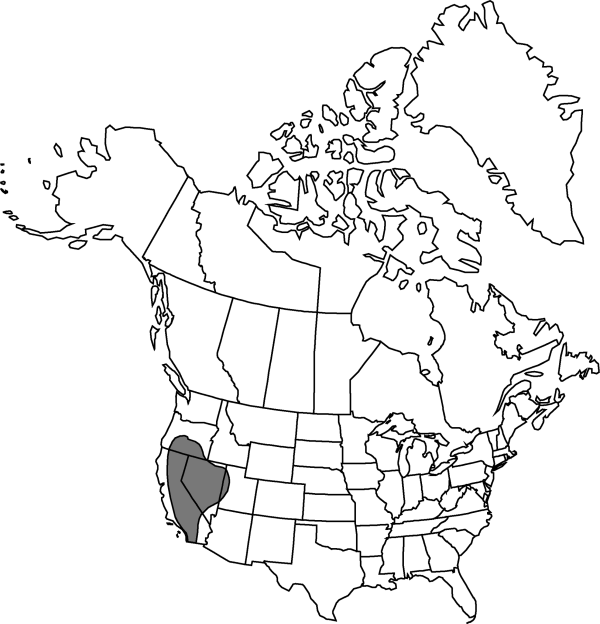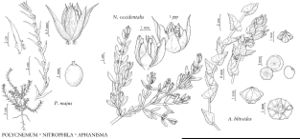Difference between revisions of "Nitrophila occidentalis"
Botany (Fortieth Parallel), 297. 1871.
imported>Volume Importer |
imported>Volume Importer |
||
| Line 57: | Line 57: | ||
|publication year=1871 | |publication year=1871 | ||
|special status=Illustrated;Endemic | |special status=Illustrated;Endemic | ||
| − | |source xml=https:// | + | |source xml=https://bitbucket.org/aafc-mbb/fna-data-curation/src/2e0870ddd59836b60bcf96646a41e87ea5a5943a/coarse_grained_fna_xml/V4/V4_478.xml |
|genus=Nitrophila | |genus=Nitrophila | ||
|species=Nitrophila occidentalis | |species=Nitrophila occidentalis | ||
Latest revision as of 21:58, 5 November 2020
Stems sometimes prostrate and stolon- or rhizomelike with scaly leaves, 7–20(–30) cm; above-ground stem not densely leafy. Leaves of main stems clasping at base, leaves of main stem sometimes connate, arched-spreading; blade linear, terete or subterete, at least in distal 1/2, 5–20(–30) × 0.7–1.5 mm, apex sharply acute or apiculate, sometimes retuse. Inflorescences solitary, sessile flowers, or if 2–3-flowered, additional flowers short-pedicelled. Flowers: perianth segments erect, pinkish to yellowish brown, 1-veined, ovate, 2–3.3 mm; stamens included; filaments shortly connate basally; style longer than stigmatic branches. Utricles concealed by persistent calyx. Seeds brown, ca 1.2 mm. 2n = 18.
Phenology: Flowering spring–summer.
Habitat: Relatively moist, alkaline flats or meadows, 400-1900 m
Distribution

Calif., Nev., Oreg., Utah.
Discussion
Nitrophila occidentalis often occurs with Distichlis, Juncus, and Sarcobatus.
Selected References
None.
